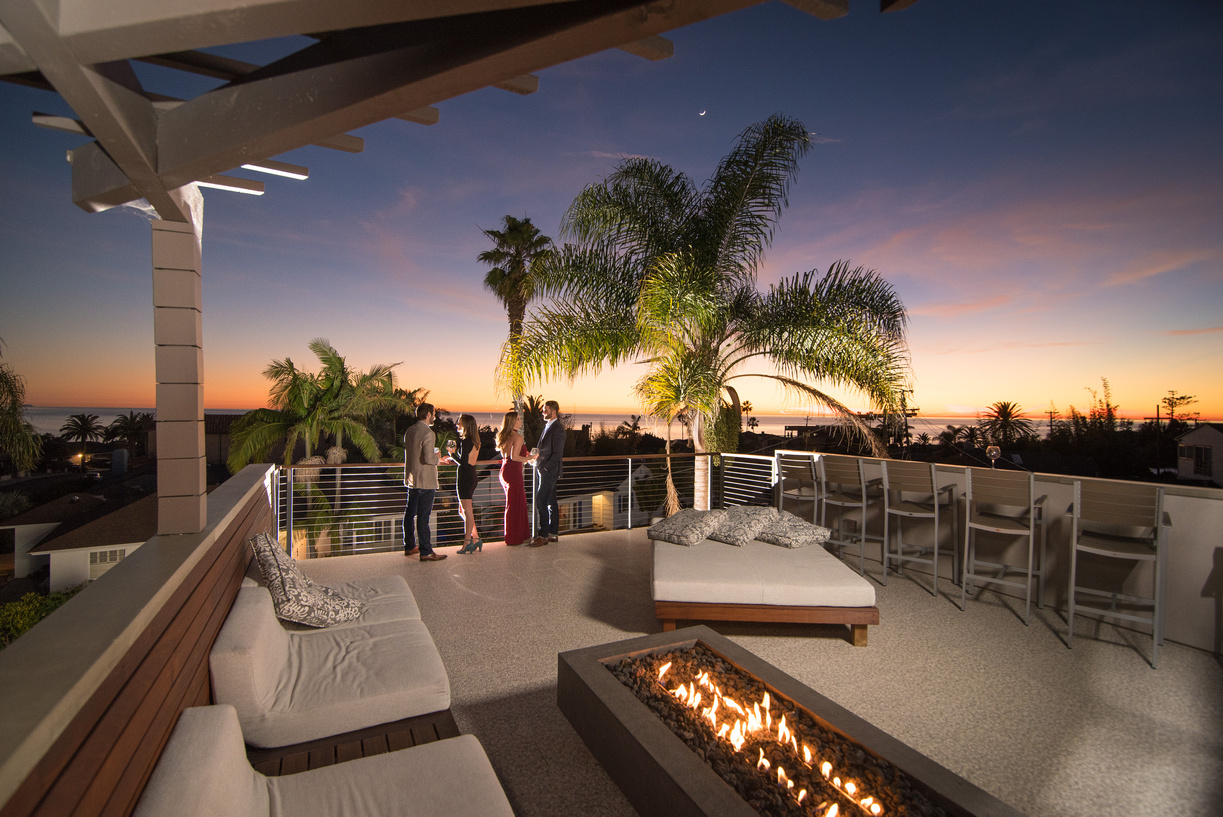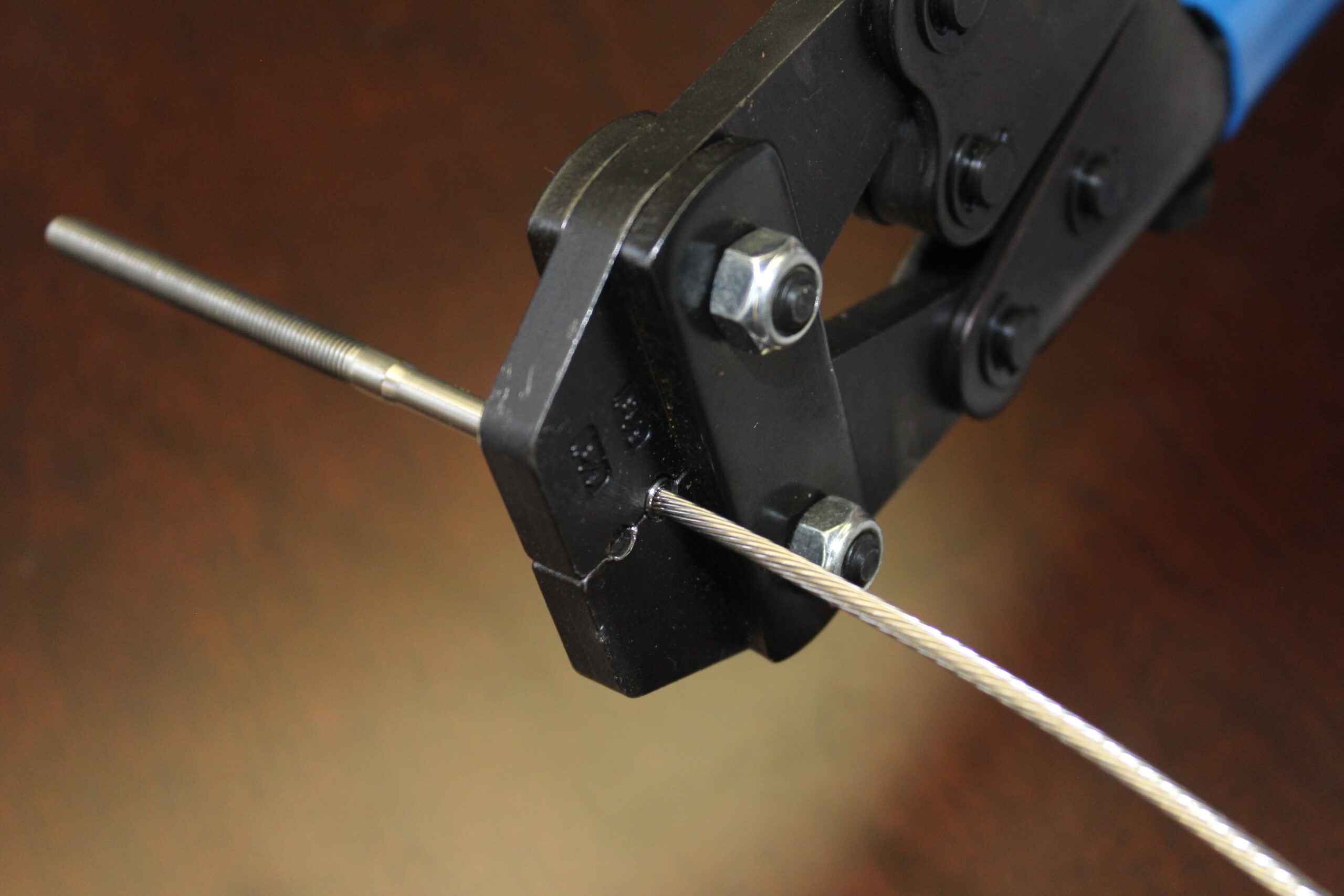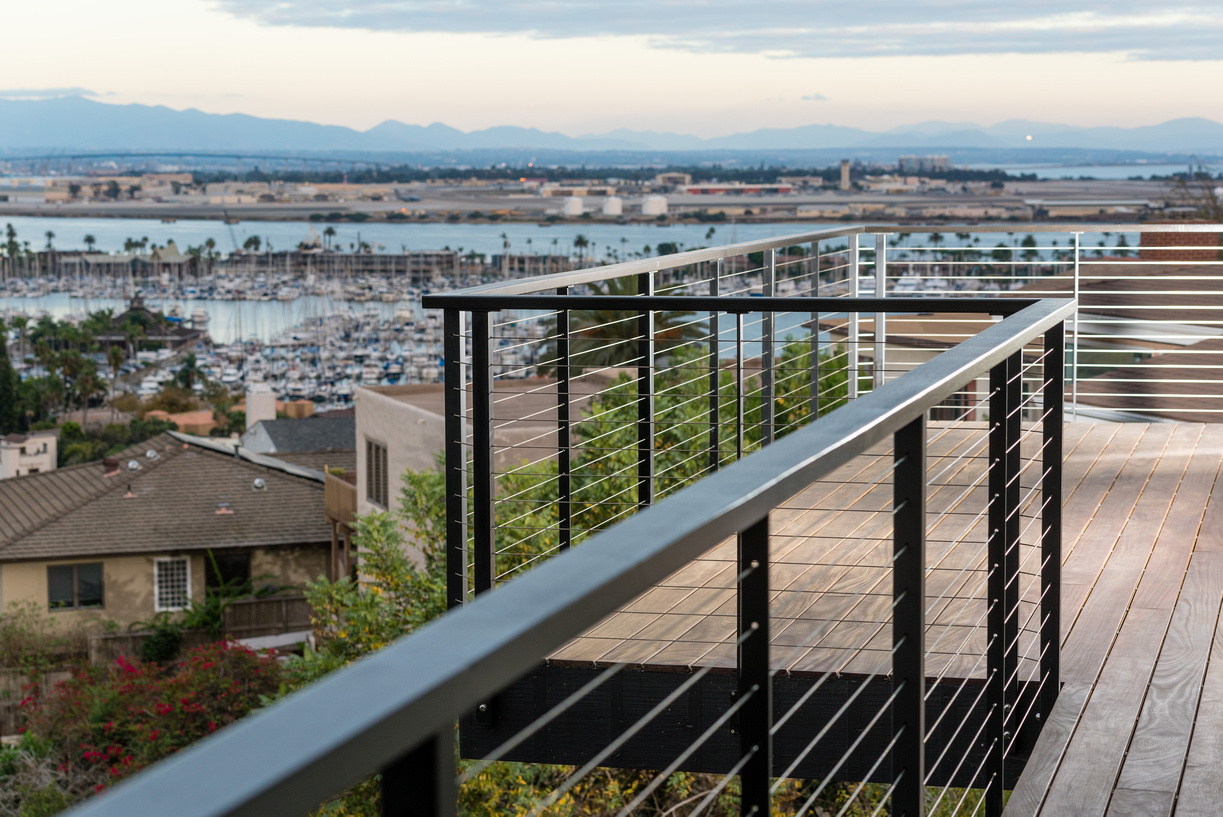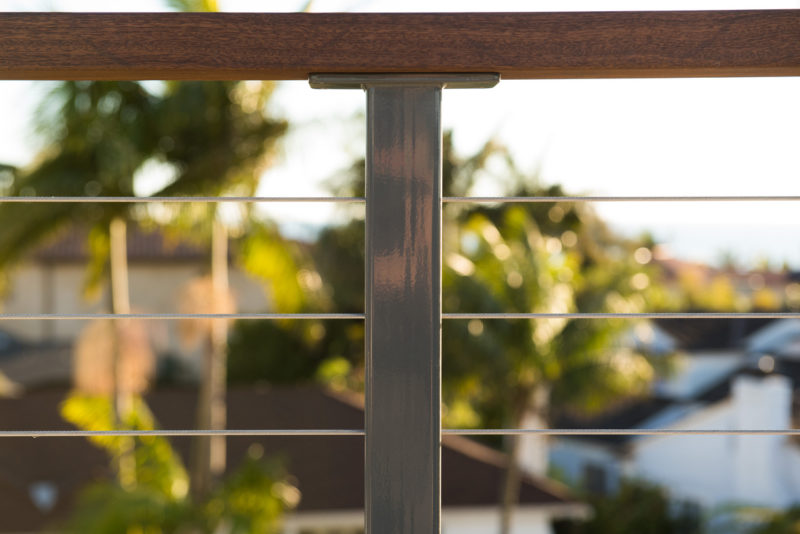




In sunny climates our outdoor living spaces are as valuable as those inside. Whether you are throwing a bbq, entertaining, or just relaxing, outdoor areas completely expand the home. Home improvements related to outdoor living can provide homeowners with a great return on investment and plenty of kudos from friends and family. Here are a few ways to make the most of your outdoor living situation at home: Install Attractive Landscaping- Even the addition of a few potted plants can positively transform an outdoor living area. Plants can add a touch of softness to modern designs and raw spaces like concrete patios. Using borders to accent pathways while adding a touch of green will compliment new decks and hardscaping. Planting a few trees can provide shade and even cool the space during daytime use. Flowering shrubs , vines, and native plants will add color and depth to your design and make the hardscape look complete. Build an Outdoor Kitchen- A covered patio is a perfect location for an “outdoor room” like a kitchen. Homeowners have tons of choices when it comes to high quality materials and finishes like stone counters, stainless steel appliances, and basically anything available inside the home kitchen. Finish off an awesome deck with a built in bbq, lighting, and an outdoor fridge. Add a jacuzzi or softub and a staycation awaits at any time. In sunny states like California, and Florida, outdoor kitchens are useful 12 months a year. Purchase or Construct Planter Boxes- Outdoor planter boxes are attractive and offer huge value with the ability to grow healthy vegetables right in your backyard. Planter boxes can be constructed from wood, composites, corrugated steel, or hybrid combinations of the above mentioned. Container gardens made from wine barrels can house fruit trees on smaller patios without taking up too much valuable space. Adding a trellis to your planter can allow for more versatility by growing vertically in small spaces. Consider New Deck Railings or Fencing Fences and railings provide an awesome opportunity to add architectural flare and safety to an outdoor living space. Modern railing systems like stainless steel cable railings and glass panels are attention grabbing and low maintenance improvements. Cable fencing can be used for perimeter barriers that need to be transparent; while glass panels can provide wind breaks for outdoor dining and nighttime entertaining. Use Low Maintenance Composite Decking Products- Low upkeep improvements are the best kind! Composite decking is definitely low maintenance. If you don’t want to refinish your deck and a 25 year product warrantee catches your interest, then installing a Trex or Azek deck may be the best option. Composite decks feel good under bare feet and require little more that an occasional hose down. When combined with a low maintenance cable railing system these decks are a turnkey solution for 30 plus years of outdoor living enjoyment. If you would like to learn more about transforming your outdoor living space our pro’s can help. We have an entire product line of railings and fencing, preferred installers and nationwide shipping. Give us a call at 844-277-7327 or visit the quote request page for pricing and quotes!

In this months post we discuss common questions about DIY railing systems. Structural considerations and code concerns as well as product lines and standard spacing requirements are all addressed in the Q and A post below: Is it legal and code compliant for me to do a DIY railing? As long as a code compliant railing system can be constructed, it is perfectly legal to construct your own railings. We have a variety of wooden, steel and glass product choices for DIY installation. What tools do I need in order to install a deck railing? Minimal tooling is required to install your own deck railings. Most commonly a drill/driver, wrench set and basic hand tools, a saw and a hammer are all that’s needed to install a deck railing. Are deck railings built the same as second story balcony railings? Yes. A code compliant railing system should satisfy either scenario. A combination of the right post spacing, top railing, and infill will successfully pass a building inspection. What is the proper spacing for my railing posts? The safest short answer is not to exceed a 4′ spacing in between railing posts. Regardless of the infill choice (cable, glass, pickets, rods) this spacing should simplify your layout and satisfy building code. How many bolts do I need to use for attaching each post? A minimum of 2 bolts per post, with a minimum of 3″ of structural penetration is needed for a proper connection. This is a general rule; some aluminum systems require 3 bolts. Proven railing systems will be engineered with proper bolt sizing and counts. Can I mount railing posts to pavers or paver stones? It is not recommended to mount posts directly to paver stones which are often set in sand. The safest way to approach this is by removing the paver, setting the post in concrete, and replacing the paver stones upon completion. Are there any glass panel DIY Railing Systems available? San Diego Cable Railings furnishes modular glass railing systems that are DIY friendly. Many of the components are the same as cable railing systems. Level deck railings are a good candidate for DIY glass railing install. Stairs and angled fences may require professional installation. Can I incorporate a gate into my railing system? Yes. Gates can be used to create access points within the railing and still observe code spacing requirements. DIY mounting hardware and cable hardware is available for our gates. What is the lead time for a DIY railing system? Standard lead times for railing packages average 3-4 weeks. Stock items like a la carte railing posts or cable assemblies can be ready in as little as 1-2 weeks. Contact us at 844-277-7327 or visit our quote request page for exact lead times on specific products. Ask one of our sales associates about expedited shipping.

If you’re building a raised deck it’s important to understand the basic safety and loading requirements for standard construction. Thousands of people are injured annually due to deck and porch accidents. Structural instability is almost always the cause for these deck failures and for this reason we offer our customers the following info. Understanding live loads, lateral loads and post spacing requirements can be a great asset to any deck building project. Live loading requirements are commonly referenced when discussing the amount of weight a deck must be able to safely carry. A common requirement for today’s decks is 60 psf. The PSF abbreviation refers to “pounds per square foot.” Simple calculations can be performed in order to calculate the live load requirements for your deck, based on span tables like the one shown below: Code Requirements for Decking Loads A pounds per square foot calculation at 60 psf. will provide a safety factor for any raised platform that can safely accommodate the weight of persons and furniture on the deck surface. A well built deck should always lean towards “over built” for additional loading, snow loads etc. In many cases, a 2 to 1 safety factor is the safest approach. Simply stated a 60 pound per square foot floor load should already contain this safety factor. As these requirements can vary by area; it’s always best practice to check local codes. The code height requirement for deck railings in California is 42″ finished height from the top of the decking to the top of the railing. Any openings in the infill must prevent a 4″ sphere from passing through the railing. A 36″ railing height is required for stairs with graspable railings required in many cases. Customers purchasing pre made railing posts should consider that the finished post height allows for a solid connection that will withstand a 200 pound lateral load applied to posts or railing sections in any direction. Deck Safety Requirements for Railing Posts Post spacing will greatly influence the overall strength and loading ability of a deck railing. Call outs for railing post installations that exceed 6′ spacing will not likely pass a building inspection. For cable railing systems a max spacing of 4′ on center will commonly be required to ensure that 3″ cable spacing can carry sufficient tension to pass a 4″ sphere test. For glass railings a max post spacing of 5′ is often recommended. Many online retailers call for up to 8′ spacing for deck railings however our preferred contractors do not recommend this for any raised deck surface. Choosing the Sturdiest Decking and Railing Products Customers looking for high strength and durability will find that only top quality materials can provide the best finished product for passing inspections. Hardwood decking planks like Ipe’ and Cumaru offer the same span capabilities at 1″ thickness that other wood types call for 1.5″ thickness. Durability of hardwood products is also likely at least double that of popular soft wood choices. In some cases hardwood is 30 times more dense than standard framing lumber. Composite decking planks like Trex are a low maintenance option for exterior decks; with some warranties lasting 25 years. Customers selecting composite products should however consider the fact that these products are not structural in nature; and that framing requirements may need to be more stringent for composite decking. Joist spans may need to be tightened in order to maintain stability. When selecting a railing for ultimate strength; steel posts and rails will almost always offer more strength than wood by comparison. Only hardwood species can come close to steel in terms of strength and hardness. In addition, the longevity and wear resistance provided by steel and stainless steel railings is also much higher than wood. San Diego Cable Railings is dedicated to the production of high quality stainless steel railing systems. Our company sells a full line of cable and glass railings, as well as engineered railing posts for a variety of applications. If you have questions about deck safety requirements on your project; or you would like an estimate for deck railings click the link below.
Stainless steel types, grades and finishes; with so many choices which one is right for your project? In this post we aim offer our potential customers a beginners guide to stainless steel railings; including grades, finishes and infill types. With our selection of product solutions, preferred installers, and code compliant railing hardware you’re sure to find answers and products to fit your needs. Grades of Stainless Steel When dealing with interior and exterior building products like fences and railings, we are primarily discussing two grades of stainless steel. Railing posts and products we furnish are available in both T304 and T316 grades of stainless steel. Both choices offer excellent corrosion resistance; however T316 is considered to be a “marine grade” stainless steel product. For salt air conditions right on the coast T316 stainless is our grade recommendation. All of our stainless cable assemblies utilize T316 wire and hardware. Customers with homes at least 1-2 miles from the coast and further inland may benefit from the cost savings offered by T304 stainless steel products. T304 offers superior corrosion resistance to mild steel at a better price point than T316. For inland and non salt applications T304 products sustain excellent corrosion resistance for 30-50 years. Our company also offers galvanized options discussed in other posts. Infill Choices for Stainless Steel Railings Although modern choices in today’s railing market place are vast, we fabricate with two primary infill options. Many of our customers homes have expansive views, and they primarily request glass or stainless steel cable infill. Our stainless railing posts can accommodate both tempered glass panels and stainless steel cables. Glass panel systems utilize stainless steel clips to secure the panels mechanically to the railing posts. Cable infill options are available in both 1/8″ and 3/16″ diameter wire; with machine swaged and DIY hardware options. Other infill options for stainless steel railings can include vertical cable, stainless rods, horizontal bar railings and even wooden infill options. Horizontal wood infill can be combined with stainless railing posts for a modern twist on privacy railings or screens. Horizontal bars or pipes can also be used as railing infill. Mechanical and Coated Stainless Finishes Many of our bare stainless steel railing posts and rails feature mechanical finishes of different grits, sheens and textures. These include dusted, brushed and polished finishes. Each have respective strengths and desired aesthetics related to durability and sheens. Low sheen finishes are more forgiving when it comes to dirt or traffic. High sheen finishes will typically offer more resistance to contaminants but less resistance to dirt or fingerprints. Powder coating is a durable and cost effective way to add longevity and adaptability to stainless railing components. Much like paint, powder coating offers hundreds of color options with the bonus of a high temperature baked on coating that offers a barrier between the metal and any contaminants. Powder coated finishes can also mimic metallic finishes, while offering options for light to rough texture. Clear coats, waxes, cleaners and oils can also be used to protect and enhance the finishes on stainless steel railings. San Diego Cable Railings produces some of the longest lasting and attractive railing options in todays marketplace. Since 2009 our sales and production team has assisted customers in 50 states. Our preferred installers travel up and down the California coast providing quality craftsmanship and expert knowledge of our product line. Potential customers interested in stainless cable and glass railings can visit the quote request form or give us a call at 844-277-7327.
Every set of stairs is unique, from the rise and run to individual angles. When purchasing a stair railing system or components there are a few vital measurements needed for a proper installation. Additionally, some commonly used terminologies are needed for measuring stair railings, hand rails and balusters. Here are a few commonly used terms referring to stairs and their components: Tread- A tread is the top surface of a step Riser- The vertical member between stair treads Nosing- A nosing is the outer edge of a tread (ex. bullnose) Balusters, Pickets, or Spindles- These are terminologies used to rever to vertical members of the railing infill Step- The combination of riser and tread creates a “step” Landing- A landing is a platform used to break stair flights or land stair stringers Stringers- Angled stair supports used to support steps; they can be constructed of wood or steel Grab Rail- A graspable railing section separately used for support ; can be attached to a barrier railing or located on an opposing wall This diagram references the code requirements for stair railings that are related to the terminology provided above. Note the call outs and dimensional requirements for “landings”, “risers”, “nosings” etc. How to Measure Your Stairs for Cable Railings Measuring for stair railings doesn’t need to be complicated. Here are the steps we recommend to our customers submitting requests for quotes. Including photos with your measurements is also very helpful to our estimators. Simple line drawings are also useful in determining stair cost. Steps for Taking Stair Specs. : Measure the overall height of the stair set. This is the distance from the floor to the landing at the top of the stairs. Measure the overall length; this is the distance from the edge of the stair nose from the top stair/landing to the bottom stair nosing Calculate the depth of the finished tread by measuring the length of one tread from front to back Measure the height of a finished tread by calculating the height of a riser from a base tread to the tread on the stair above it Estimate the stair angle; this can be done in several ways by using the rise/run dimensions of individual stair treads or the overall rise/run. Using the information from these steps we can utilize one of many stair calculators online. This diagram below shows a graspable railing section parallel to the angle that is created by the line of the stair nosings. By measuring directly up from the nose of the top and bottom stair we can easily find the line/angle for the grab rail. Quotes for Cable Railings or Glass Panel Stair Railings Cable and glass railing systems are awesome choices for stair railings and can be fabricated easily with standard measurements and photos. Please use the guidelines in this article for accurate measurements and practices regarding your stair railings. San Diego Cable Railings provides a one stop location for fabrication and installation of stair railing systems. We have furnished hundreds of stair railing kits, as well as preferred installation of these railing kits. Quotes for stair railings are available in 24-48 hours and lead times for railing systems are typically 2-4 weeks. If you have questions about measuring stairs or angles for your railing system; give us a call at 844-277-7327 or visit the quote request page today.
Whether your home has existing baluster style railings, rod iron, or a pony wall ; you may be considering a stairway remodel to modernize your space. Interior stairways can be an important focal point and they often become the first impression in the entryway of a residence. Here are a few stairway remodeling tips to consider during your next staircase renovation project: Tips for Removing Balusters Removing existing balusters without damage to the wall can be tricky and installations will vary widely. Many times the balusters are pin nailed, glued or bolted down at each location. For natural wood wall caps this type of attachment will almost always require a wall cap replacement. Even a successful patch and match job will be visible on a natural timber because of the amount of patches and color variation. . Stairways with only existing newel posts may be better candidates for a patch. Another possibility is to patch and paint the natural wall cap if the budget does not permit for a new one. Paint will hide the imperfections better than stain or clear coat. Changing a Wall Into a Wall Cap Removing a bannister wall and replacing it with modern railings is currently a very popular home improvement. This can be a bit more involved than just removing balusters as it is necessary to cut structural timbers and drywall; patch, paint and most often replace the wall cap. Although the process is involved, these jobs provide huge gains and visible changes. Experienced DIYers can tackle this type of project as long as there is no existing electrical and the wall does not provide support. More often a professional contractor is required for this type of stairway remodel. Modern Replacement Railings Stainless steel cable railings and glass railing systems offer the most modern and transparent solution for your new staircase. Removing old balusters and walls will increase the amount of light and transform the space and style from old to new. Consider open tread stair options like a mono stringer to allow even more light and modernization. Our sales staff at San Diego Cable Railings has been modernizing stairways for over a decade and our preferred installers have been remodeling stairs and custom railings since 2003. If you have questions about our products or services for your stairway remodel visit the quote request page.

Stainless steel is one of the most corrosion resistant metals used in exterior construction applications. It’s stronger than aluminum, contains very little iron and comes in many grades. Type 316 stainless is used in high profile projects for the food, marine and aviation industries . So why should anyone powder coat stainless steel if it’s such a durable material? The answer boils down to aesthetic preferences, environments and exposure. How to know when you need extra protection against the elements If you live outside of the coastal zone and have no exposure to salt air; stainless steel railings will virtually last forever. Rain and other fresh water sources like dew or lakeside conditions are really no match for the durability of stainless. UV exposure poses little risk to the longevity and finish without salt as a contaminant. The real culprit for damage to stainless steel railings is contamination. One major reason to powder coat your stainless steel railings is extra protection against contamination. Contamination comes from the reaction of surface residue with the metal itself. Whether it be from sources that collect on the the railings or by leaving traces of dissimilar metals or environmental sources. Typically if the railing surfaces are kept clean and regularly maintained; there is little to no residual damage from contamination. However if environmental contaminants like salt, chemicals or airborne residue from metro areas is left for long periods of time; they will eventually pit and corrode ANY industrial metal material. Listed below are some examples some possible contaminants: salt spray/coastal air and moisture residue airborne soot particles dust and dirt buildup from plants and trees hard water from sprinklers or overspray from neighbors non-approved caustic cleaners that may have been used to in an attempt to remove dirt and grime Powder Coating Stainless Steel Railings for Looks If you want a black railing and you live in a coastal area then black powder coated stainless steel is probably an easy selection. The same follows for white or just about any other color on the spectrum. Powder coating comes in more colors than you can count and is also available in metallics. Custom powder comes in vein finishes, fluorescent shades, specialty coatings with textures, and architectural grade products. If you want a powder that looks like stainless; metallic finishes are almost an exact match to bare stainless steel. Some of our customers actually prefer the coated aesthetic to the bare finish. Coating for Durability Salt environments and their effect on steel can test even the toughest of materials and highest grades. Corrosion in a salt air environment boils down to the thickness and resistance of the metal vs the corrosive properties of the contaminant and how long it will take to “eat” through the material. Type 316 stainless steel can last 30 years in these environments by itself, but when we add protective coatings it can extend the life and the beauty of the product. Powder coating can also make maintaining your railings easier and provide the ability for re-coating down the road to keep them looking new longer. Wiping down a coated surface makes cleaning a breeze and certain colors can hide dirt and grime. San Diego Cable Railings offers powder coated stainless steel cable railings and glass railing systems for commercial and residential applications. If you have questions about the most durable options for your railing system, give us a call or visit the quote request page.